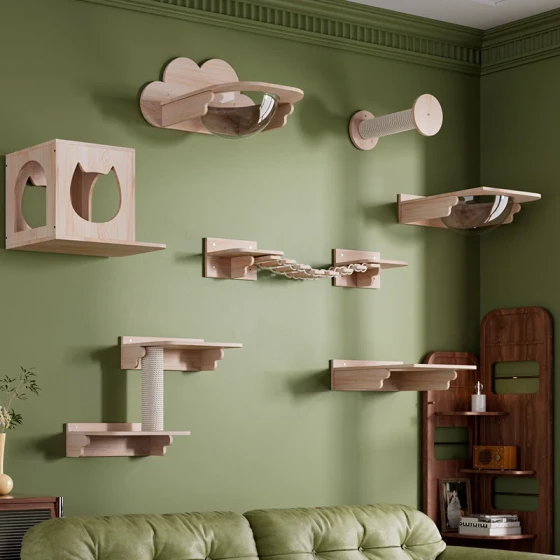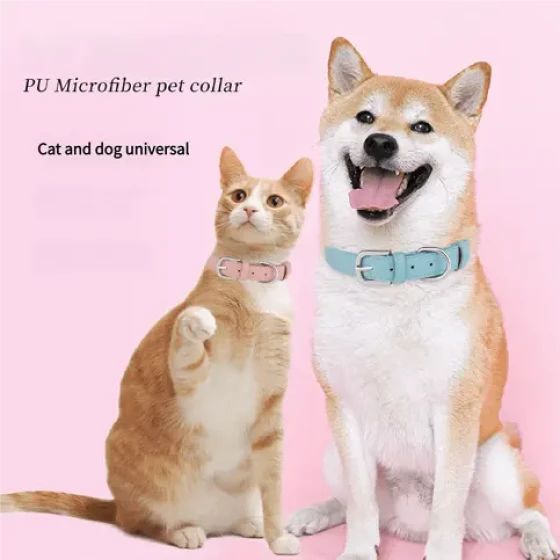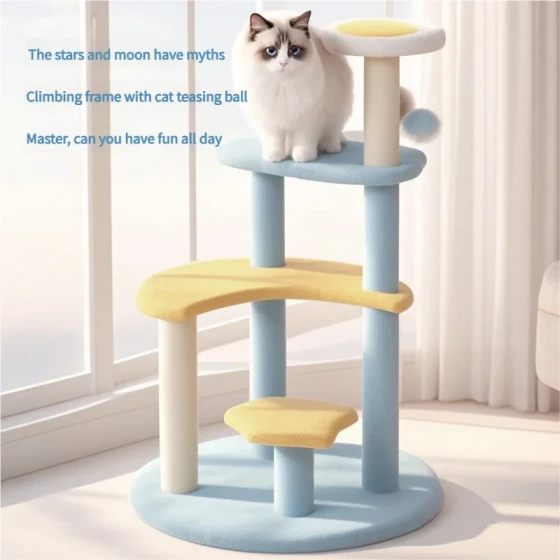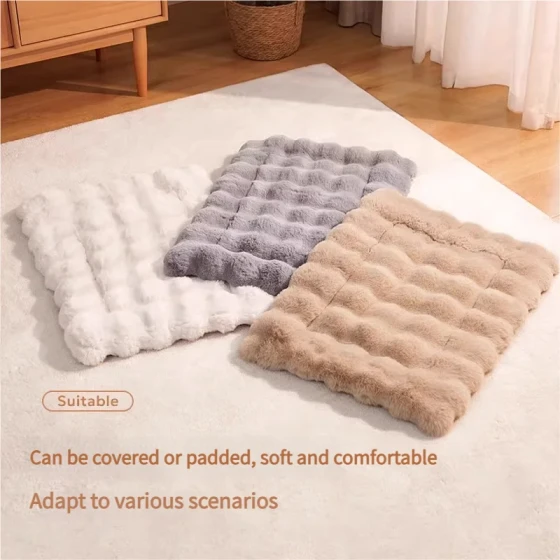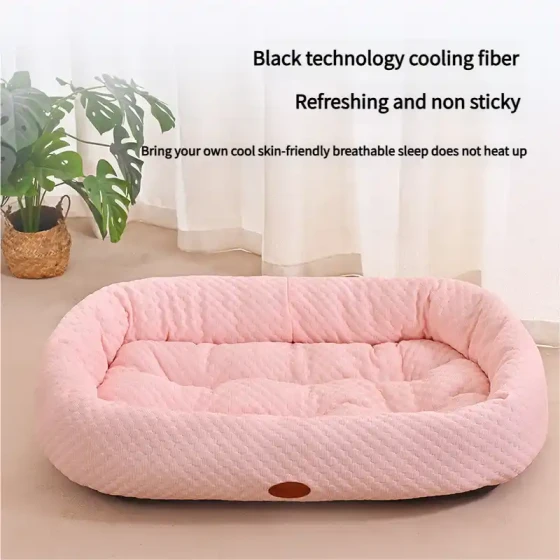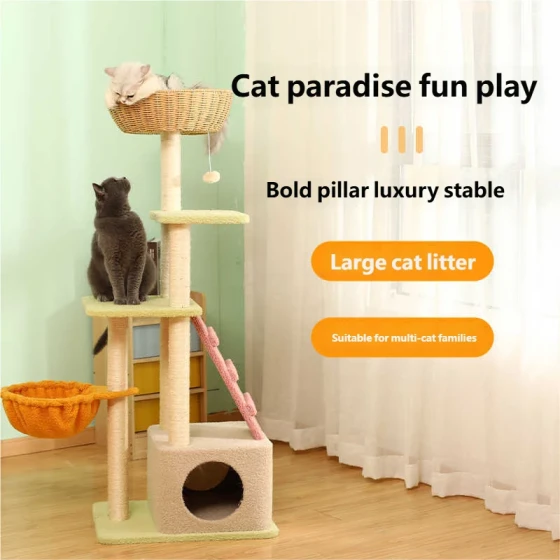Cat Flowing Yellow Nasal Discharge_Warning Signs of Cat Herpesvirus Rhinotracheitis
Friends who raise cats, if one day you find your furry child starts to have a runny nose, and the mucus changes from clear to thick yellow, even somewhat green, don’t just mutter “Oh, a cold?” and then ignore it. The story behind this may be far more complicated than you think and requires your full vigilance because this could be a typical symptom of feline herpesvirus rhinotracheitis.
Here’s the main point: cats flowing yellow nasal discharge, especially accompanied by sneezing, tearing, lethargy, and loss of appetite, very likely indicate an infection. Among these, feline infectious rhinotracheitis (commonly known as cat herpesvirus rhinotracheitis) is a major suspect. This is not a minor issue you can solve by “drinking more hot water” like humans; neglecting it may cause serious trouble, even endanger life, especially for kittens.
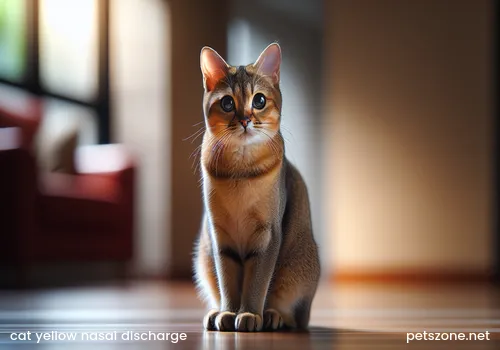
Often, raising cats is like raising children; seeing them sneeze or have a bit of a runny nose is always taken as a trivial matter. After all, who hasn’t had a headache or cold? However, cats’ physiological structure and immune system differ from humans, and a seemingly ordinary symptom may indicate a highly contagious disease. Cat herpesvirus rhinotracheitis, a name that sounds like a street alias, is actually an upper respiratory infection caused by feline herpesvirus (FHV-1). This virus is widely present in cat populations; statistics show about 80% of cats worldwide may carry this virus, and exposure rates reach as high as 97%. Your cat or cats they have contacted very likely are carriers.
Symptoms of cat herpesvirus rhinotracheitis usually follow a progression. Initially, you may see your cat sneezing, with clear nasal discharge and tears, which is easily mistaken for a simple cold. But as the illness develops, the virus damages the cat’s nasal and respiratory mucosa, opening the door for bacteria. At this point, secondary bacterial infection invades, causing nasal secretions to change from clear to thick, purulent yellow-green mucus. This is why yellow nasal discharge is a critical warning sign — it usually means the disease is no longer a simple early viral infection but may be complicated by bacterial infection, worsening the condition.
Besides nasal discharge color change, cat herpesvirus rhinotracheitis often comes with a range of other symptoms:
- Frequent sneezing: One of the most classic symptoms, cats may uncontrollably “achoo” repeatedly.
- Eye problems: Tearing, conjunctival redness (bloodshot whites), increased discharge at the eye corners; severe cases may cause eyes to shut or corneal ulcers, affecting vision.
- Lethargy and loss of appetite: Being sick drains a cat’s energy; nasal congestion and loss of smell may reduce interest in food.
- Fever: The body’s response to fighting the virus.
- Oral ulcers: Although less common than with calicivirus, feline herpesvirus can also cause tongue and oral ulcers, making eating and drinking painful.
These symptoms generally appear 2-5 days post-infection, lasting 7-14 days or longer. Severity depends on viral load, cat’s age, nutritional status, immunity, and presence of other diseases.
So, why must we be “alert” to cat herpesvirus rhinotracheitis? Because it is extremely contagious. It mainly spreads via direct contact with nasal, eye, or oral secretions of infected cats; airborne droplets, shared feeding bowls, or even hands and clothes contaminated with the virus can be transmission media. In multi-cat households, catteries, or shelters where animals are densely kept, once outbreak occurs, the spread is rapid. Worse yet, many recovered cats become lifelong carriers, with the virus latent in the body (such as in the trigeminal ganglion). When the cat is stressed, immunocompromised, or has other illnesses, the virus can reactivate, causing relapse or viral shedding. This latency and recurrence make it very difficult to control.
Diagnosing cat herpesvirus rhinotracheitis based on symptoms alone can sometimes be tricky, since early signs resemble a common cold or feline calicivirus infection (another frequent respiratory pathogen). Veterinarians usually combine clinical signs and medical history for preliminary diagnosis. Blood tests can help differentiate viral infections (usually low white cell count) from bacterial infections (white cells may be elevated), but the most accurate diagnosis is PCR testing to detect viral nucleic acid in eye and nasal secretions.
Treatment-wise, remember this: there is currently no specific drug to “kill” the virus, especially since herpesvirus infections result in lifelong carriers. Treatment focuses on supportive care and controlling secondary infections. This includes:
- Antibiotics: Mainly to control secondary bacterial infections and relieve symptoms such as yellow-green thick nasal discharge and fever.
- Antiviral drugs: Targeting herpesvirus, some antiviral eye drops are used for treating corneal ulcers; oral antivirals like famciclovir may be used in certain cases but must be administered cautiously under veterinary guidance.
- Supportive care: Hydration and nutrition supplementation (liquid food or assisted feeding if nasal congestion impairs eating), cleaning eye and nasal secretions, and keeping the cat comfortable. Nebulization therapy may be required to relieve nasal congestion.
- Eye care: Use veterinarian-prescribed eye drops or ointments to prevent corneal damage.
- Immune enhancement: L-lysine supplements may help suppress herpesvirus replication and reduce relapse frequency and severity; many vets recommend these as adjunctive treatment or preventive measures.
Important note! Prevention is always better than treatment. The most important preventive measure, without exception, is vaccination! The feline trivalent vaccine (covering feline panleukopenia, herpesvirus rhinotracheitis, and calicivirus) is the core vaccine that effectively reduces the incidence and severity of feline herpesvirus rhinotracheitis. Vaccination cannot guarantee 100% prevention of infection or carrier status but greatly alleviates suffering and risk.
Besides vaccination, daily care is also crucial:
- Maintain environmental hygiene: Regularly clean and disinfect the cat’s living area, especially food dishes, water bowls, and litter boxes. Diluted bleach solutions can be used because the feline herpesvirus does not survive long in dry environments.
- Avoid stress: Moving, environmental changes, new family members, etc., can stress cats and trigger virus reactivation. Provide a stable and safe environment whenever possible.
- Avoid contact: If there’s a sick cat at home, isolate it thoroughly and maintain personal hygiene and disinfection to prevent cross-infection with healthy cats.
- Enhance physical fitness: Provide a balanced diet, ensure proper exercise, and boost the cat’s immunity.
By now, you should understand that yellow nasal discharge in cats is not a trivial matter; it is a strong sign that you need to take your cat to a veterinarian as soon as possible. Do not arbitrarily medicate; human cold medicines may be toxic and even fatal to cats. Professional diagnosis and treatment are the only correct ways to help your cat overcome the difficulty. Early detection and treatment not only reduce your cat’s suffering but also lower the risk of chronic rhinitis, conjunctivitis, and other sequelae.
In summary, cat yellow nasal discharge is a symptom requiring high attention. It may signal herpesvirus rhinotracheitis, other respiratory infections, or even dental problems or nasal tumors (though less common than infections, they can also cause unilateral yellow-green discharge). As a responsible cat owner, be sure to take your furry child to the vet and let professionals evaluate and manage the condition. After all, having them healthy and purring around your feet is our greatest wish, isn’t it?
